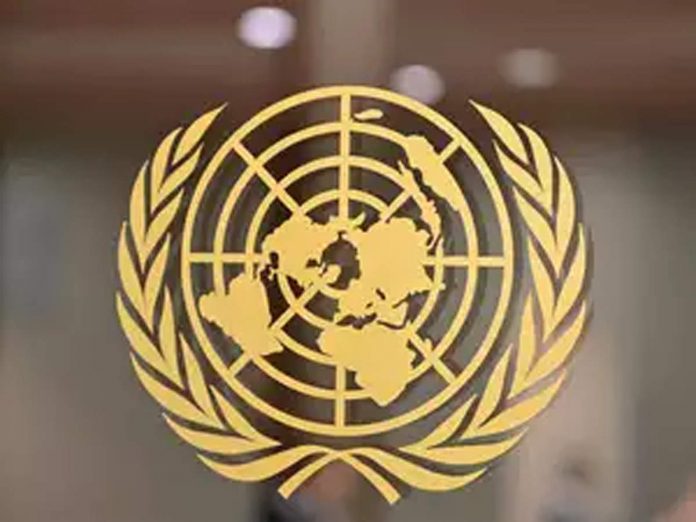India’s immense contribution to the ONUC (French: Opérations Des Nations Unies au Congo), one of the United Nations’ (UN) most complex peacekeeping missions in its 75-year existence, has been ill-documented, even in histories of the country’s international relations. India’s participation in ONUC lasted four years, from 1960, but was accelerated rapidly in 1961 after a series of crises threatened to debilitate the mission. India contributed diplomatic and military expertise, troops, food and aid. Why is this episode so neglected and what does that mean for India at the UN currently?
The form and scale of India’s participation in the Congo mission was crafted by the requests of then UN secretary-general Dag Hammarskjöld’s and responses from Indian prime minister Jawaharlal Nehru throughout the crisis. The Congo had achieved independence from Belgian rule by mid-1960; by year-end, the provinces of Stanleyville, Léopoldville, Kasai and Katanga had all seceded, becoming competing sovereignties.
Also, a refugee crisis had broken out in the Congo’s North Kasai region, where Indian nurses had been deployed. Indian participation at the highest levels was de rigueur from the very beginning, with Indian diplomat Rajeshwar Dayal appointed Hammarskjöld’s special representative and Brigadier Indar Jit Rikhye appointed military adviser for the entire mission.
In the wake of Congolese PM Patrice Lumumba’s 1961 murder, Ambassador Dayal implored the UN to actively consider the use of force in defence of the UNSC mandates that activate peacekeeping missions, a landmark process for the future of all UN peacekeeping. When the UNSC Resolution 161 of 1961 was passed, it allowed India to send troops to ONUC and a brigade was despatched in March of that year. India also pledged $105,000 for the United Nations Fund for the Congo. Hammarskjöld said of India’s contribution that it would “go down in history as a most remarkable and in many ways the decisive event” in the crisis.
In the following three years, as Indian troops were rotated in and out of the country, a number of highly effective military commanders, including Brigadier K.A.S Raja, Brigadier R.S. Noronha and Major General Dewan Prem Chand planned and organized operations such as Rumpunch, Morthor (this is usually wrong identified as a Hindi term, whereas it was Gurkhali for ‘fight and destroy’, named in honour of the Gurkha troops who comprised a major part of the operation’s deployment) and Grand Slam. The Indian Air Force also contributed substantially towards the success of the UN troops in the Congo, led by Wing Commander A.I.K. Suarez. B(1)58 Canberra light bombers, together with Swedish, Ethiopian and Italian aircraft, became what was dubbed ‘the first UN air force’.
Captain G.S. Salaria of the 3/1 Gurkha Rifles remains the only UN peacekeeper to be awarded the Param Vir Chakra, India’s highest wartime medal. A total of 142 Indian Army officers and men won gallantry awards for their distinguished service during these three years. Meanwhile, in 1962, Ambassador D.N. Chatterji arrived in Leopoldville to establish India’s first diplomatic mission in the Congo, a further symbol of New Delhi’s deep commitment. In 1964, after successfully ending the secession of Katanga province, India, the ‘sword arm of the UN in the Congo’, withdrew from the scene completely, after assisting in an international operation where none of its national interests was involved in the least measure.
Yet, the historiography of these events is marred by inaccuracies and misrepresentation. In the 2016 movie The Siege of Jadotville, for example, a composite character represents all Indian military leadership, wears a turban, and goes by the name General Raja (likely a misplaced ode to Brigadier K.A.S. Raja). The controversial Radio Katanga incident, in which an Indian battalion attacked and captured a radio station, is also shown to have been commanded by this General Raja, whereas in reality it was Major Sawan Singh’s operation. Gurkha troops are rarely mentioned, while they were considered hugely crucial to the initial success of the mission and the securing of Leopoldville when they arrived with Lieutenant Colonel B.S. Dhillon in 1961. Reporting on Indian military tactics in the Congo, The New York Times praised a brigade group using music to establish first contact with the Armée Nationale Congolaise (the Congolese Army) as an Indian way “marked by unorthodoxy”.
There seems to be a lag between contemporary accounts of Indians in the conflict and recent retellings, which rely on whitewashing the history. In The Siege of Jadotville, Indians and the Congolese are shown supporting Irish and French forces, while the truth was the other way around.
This January, India joined the UN Security Council (UNSC) as a non-permanent member. In the debate over whether India has earned a permanent Security Council seat, peacekeeping will likely feature in a deservedly large measure. But how can there be any real appreciation of the country’s role if there are no proper histories of the 49 missions in which India has participated? Official records of India and UN peacekeeping must focus on all aspects, including the disproportionately large number of women peacekeepers, police personnel and force commanders, as well as the operational expertise that India has contributed. This is fundamental to a petition for an amplified position at the UNSC.







